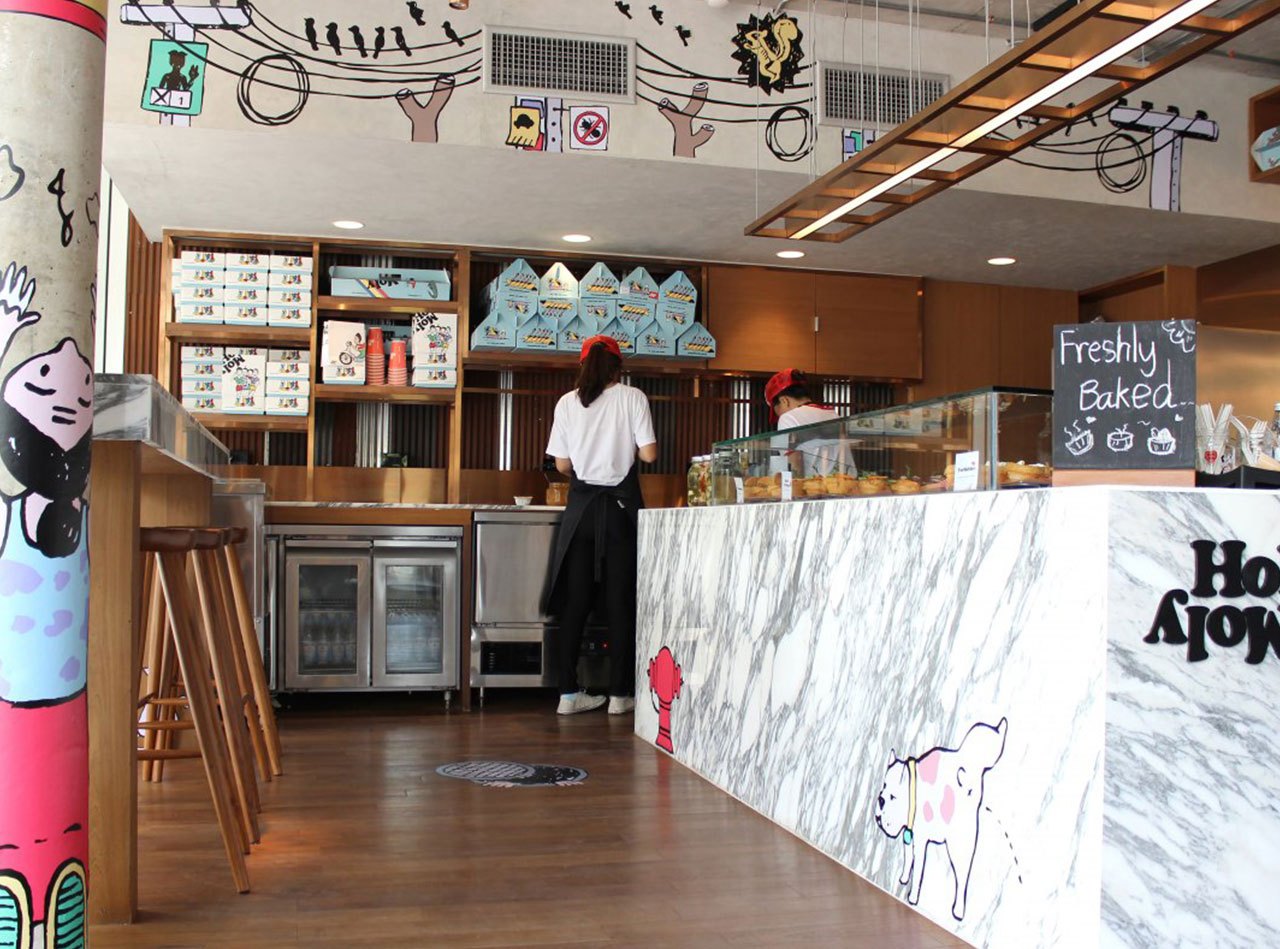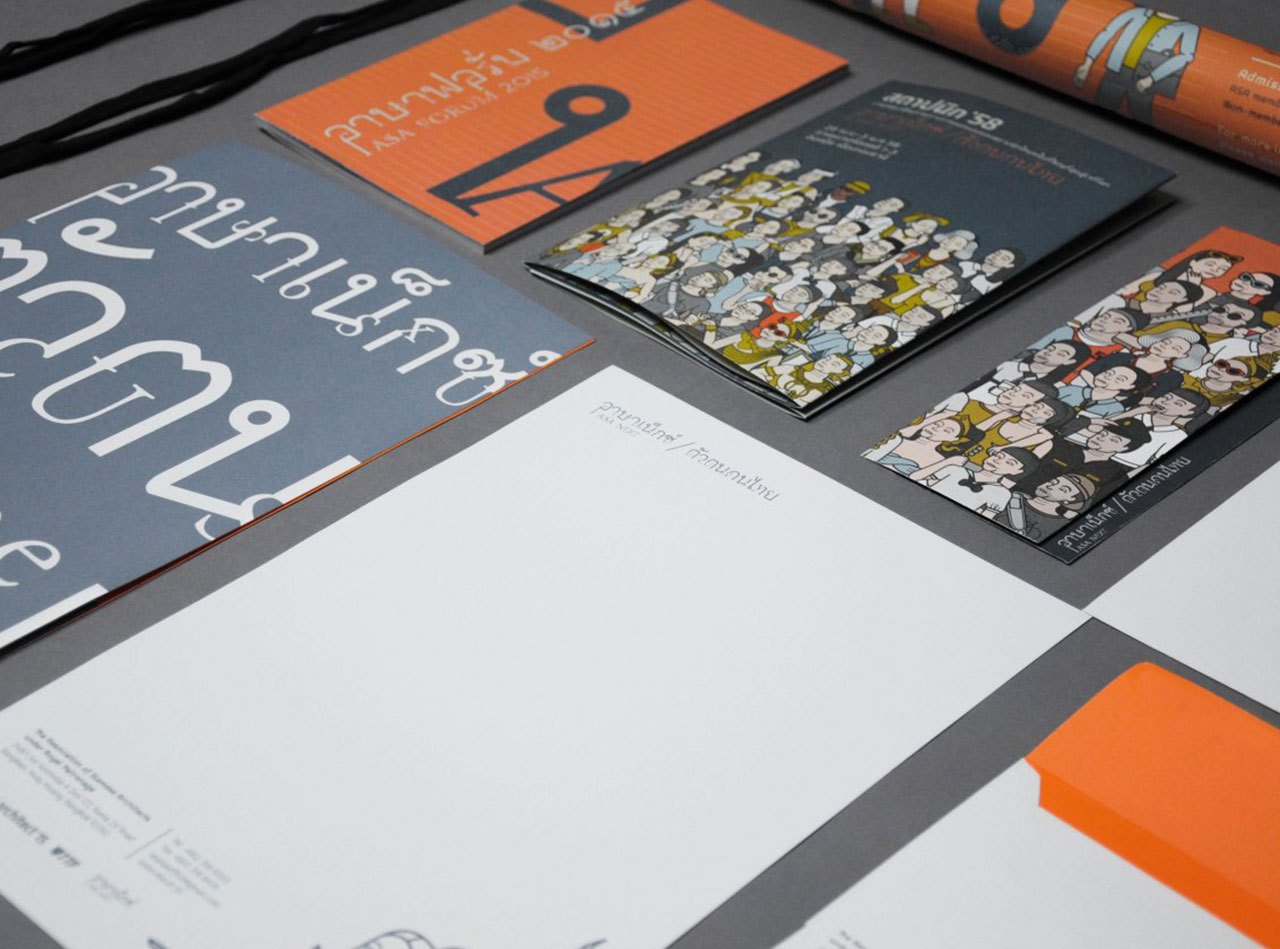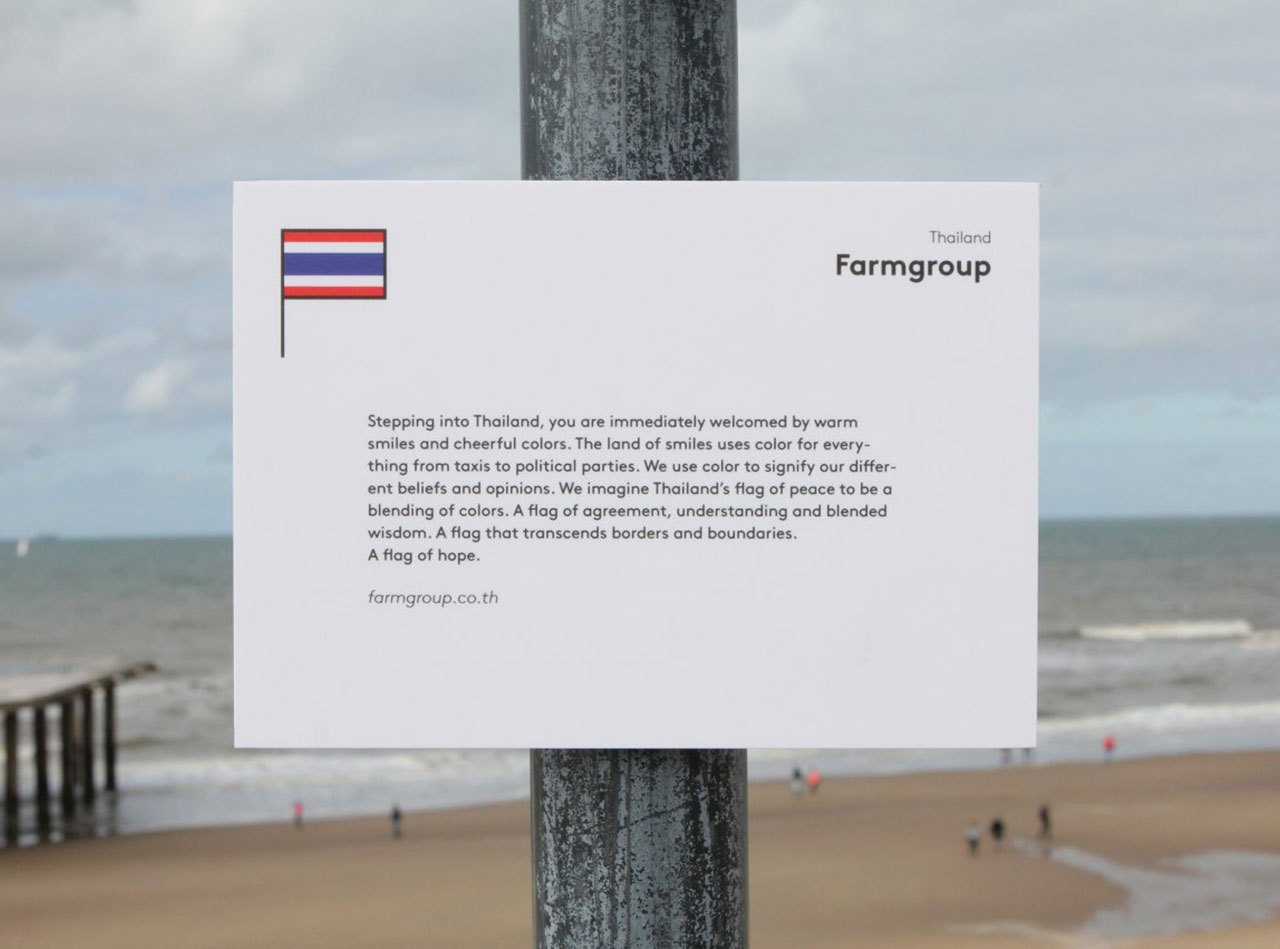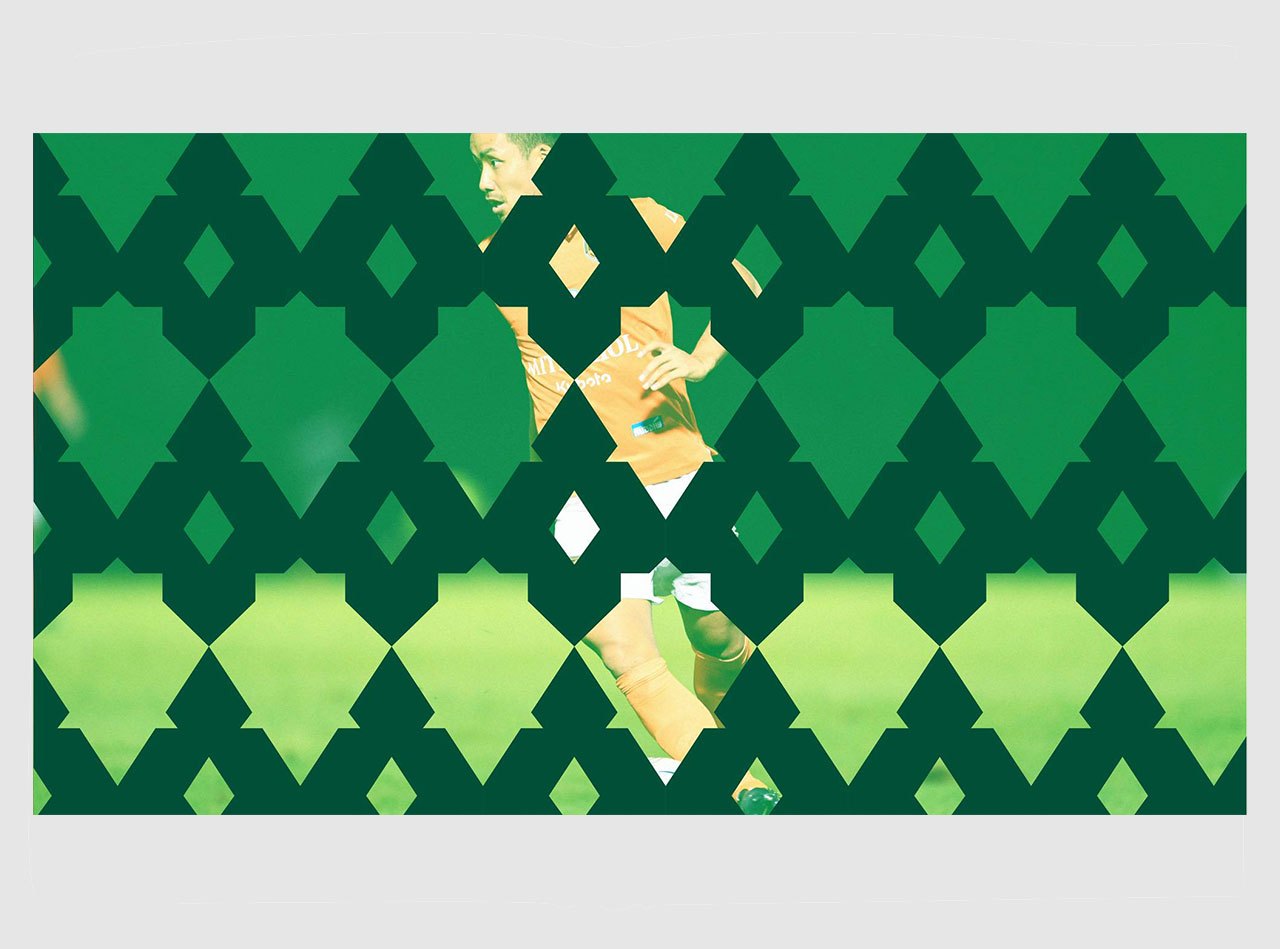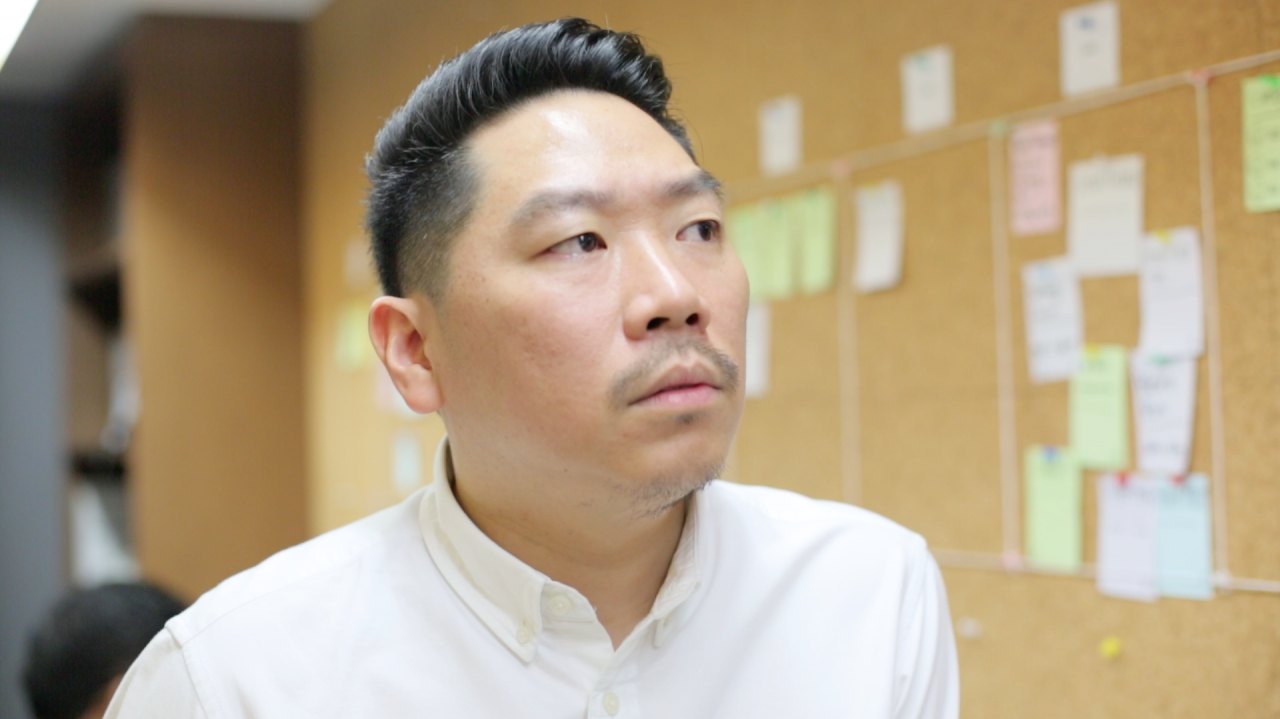Farmgroup
Creative Director and Co-founder of Farmgroup, an independent design consultancy based in Bangkok with a clientele that ranges from Vogue Magazine to the Football Association of Thailand. Tap was a finalist for Thai Designer of The Year in 2015. He serves as the Vice President for Thai Graphic Designers Association and is currently a visiting professor at Chulalongkorn University.
http://farmgroup.co.th/profile/
The interview took place in January 2016. Ingo Offermanns IOmet with Tap Kruavanichkit TKat his studio in Bangkok, Thailand.
Introducing the cultural context
IOTap, what is the most inspiring place for you in Bangkok?
TKI don’t need to be inspired to create—I just go to my studio and get to work. I draw inspiration from everything. Though, there are a few places that do particularly inspire me—not graphically, but because the music they play captivates me. Studio Lam is one of these places. They are into old Thai soul music.
IOIs Bangkok a good place for graphic design?
TKNot yet. There aren’t a lot of jobs, and clients don’t pay enough, because they don’t appreciate graphic design’s potential yet. However, Bangkok is an intriguing metropolis, so people are interested in coming here and helping to develop the profession. At the moment, design studios in Bangkok are figuring out how to be full-time graphic designers and make a living from it.
Ultimately, it’s more or less the only place in Thailand for serious graphic designers, because it’s the only developed city. Even an hour outside of Bangkok, you’ll see a drastic change. Consequently, my clientele range is very small in comparison to the population—that narrows down business possibilities.
IOWould you say that there is a typical Thai approach to graphic design?
TKThat’s difficult to say. You could maybe characterize Thai graphic design as colorful and vibrant. This might have to do with the open sky, bright sun, colorful temples, and the chaos surrounding us.
IOWhich of your cultural values could be a model for others?
TKEvery culture is unique to the people that belong to it. I wouldn’t suggest that anyone model their culture after ours. Cultures are things that needs to be developed over time, and their diversity in every corner of the world is what makes this world an incredible place.
Introducing the person
IOWhy did you decide to study in the U.S.?
TKWell, I was a bad kid, so my mom decided that studying abroad would help me mature. She planned everything and revealed her plan to me just weeks before school started. This is also a middle and upper class trend in Thailand. Because schools and universities are not the best here, those who have the money send their children abroad for a better education.
At that time it also was the only chance to get a proper education in graphic design, because it’s a very young discipline here in Thailand. Satit Kalawantavanich—one of the founders of the first professional Thai graphic design company (Sam Nor Company)—hasn’t even retired yet.
IOWhat was your dream career as a child?
TKI always wanted to be an architect.
IOWhy did you become a graphic designer instead?
TKI suck at math and physics for one, and I got into graphic design by chance. In the U.S. I first started working on animation films, because Disney studios was experiencing a comeback at the time. But I didn’t like it at all. So during a summer break in Thailand, I interned at The Bandits, a production company that did TV commercials and music videos, hoping to find a discipline within that genre that would suit me. I ended up typing letters for our location scouts. That’s when I noticed the company’s letterhead and corporate identity system. I was really fascinated by it. I looked into who had designed their system and was blown away by the work by the graphic designer Chatchaval Khonkajee from Blind Studios. He is still one of my heroes today. When I got back to the U.S., I switched to graphic design.
IOAre there other artistic disciplines that are important to you?
TKI’m still obsessed with architecture. I love photographing architecture just as much as street typography, and I read a lot about the subject, because my company is sometimes involved in extraordinary architectural projects. And since we help quite a few art-based projects, I’m interested in fine art as well. But I should also mention music and—fashion-wise—sneakers. I spend a big part of my savings on sneakers.
IOWhat do you expect from life, and what does life expect from you?
TKThat’s a peculiar question. We don’t have these masterplans in Thailand, and I don’t feel pressured by expectations from others. As a society, we are very laid back and live from day to day. I just want to play my part in improving and progressing Thai culture and our community.
Working life
IOCould you describe your typical workday?
TKI’m usually the first one at the office. I check my daily agenda and get to work. Every day can be different: meetings, presentations, design work, or coaching my employees. We have an hour lunch break, and at 6 pm everybody goes home.
My motto is: work eight hours, play eight hours, sleep eight hours. I don’t believe in working at night or on the weekend. None of it is good for the profession or for society. If you are well-organized and disciplined, you should be able to work like a regular company.
IOHow does your brainstorming process work?
TKI work very process driven. I wouldn’t call it conceptual or artistic, but more scientific. I put the design brief and the things I know into an equation—this leads to a design solution. The rest is a matter of formal taste.
IOThis sounds to me like a very rational approach, right?
TKThere are so many approaches in graphic design. For example, K Kelvin, who works for the music industry, interprets; he is asked to implement his idea and signature. Our projects demand a different approach, because our clients are very heterogeneous, and they come to us with large scale communication problems. I sometimes feel like a physician—making a case history and diagnosis in order to find the best solution.
IOAre there any rituals associated with your design process?
TKWhen I drive, when I eat, when I’m in the bathroom, there are things that I process in my head…But physically we set up mood boards and open-minded discovery sessions, where we bring together whatever we can find out about a topic.
IOLooking at your portfolio, I see a whole range of graphic styles and genres, like corporate identities, books, or signage systems. Did you compose your team of experts from all of these fields, or is everybody a versatile player?
TKAfter graduating from university, I worked as a designer for an architectural studio and gained a lot of experience in signage systems and exhibition design. But looking at the projects we’ve done over the past ten years, I was involved in each of them, because I like the challenges of the unknown that you encounter in the graphic design business. Each team member has a specific passion and expertise, but all of them like to leave their comfort zone.
IOWhy do you think clients pick you as a studio?
TKMy friends say that my company has a specific style, but I don’t think this is the reason clients approach us. It’s probably a combination of being easy to talk to and being business-minded.
When I started to work professionally as a graphic designer, I was all about experimenting. I wanted to develop new graphic languages and be expressive, more or less regardless of a client’s anxieties. Now that I have a family and 20 employees relying on me, I think more in terms of business. But economics is only one side of the story. Pushing the business side of graphic design is also an effort to establish graphic design as a serious professional discipline in Thai society—as a profession that goes way beyond matters of taste.
Attitude
IOIs graphic design your dream job?
TKYes, because I’m able to find a balance between what I can do well and what I can make a living from. Plus, it doesn’t really feel like work—It’s more play than work.
A lot of youngsters see it as a dream job too. Though, their motivation is different. The street art graffiti scene has contributed a lot to their idea of graphic design, but unfortunately their understanding is sometimes too shallow. They often don’t consider professional circumstances, or even the importance of communication, self-expression, and individuality. As a result, only about 15 % of these students really end up working in this field. That’s a problem on various levels.
IOWhat are important notions for your work?
TKTransparency and change. As graphic designers, we have the responsibility to be truthful. Sometimes clients come to us with a heroic picture of themselves that they want us wrap a design around. We always try to analyze what is behind that desire and what a client’s real qualities are. We discuss these issues openly with our clients, because we believe that only transparency is viable in the long run.
Change is important to me because visual communication needs to be developed in Thailand. We have to enhance our visual tradition and communicative mindset by applying experiences and knowledge from the U.S. and Europe. Therefore, we always try to push boundaries in our work—we don’t go for the common, safe solution.
IOWould you say that graphic design is important, in general?
TKYes, because graphic design can help solve communication problems, especially in Thailand. Just think of the Suvarnabhumi airport: It has a terrible signage system, yet it’s one of the most expensive airports in the world. Good graphic design would make the airport more efficient. But I’m also talking about traffic signs and school books, for example. Graphic design can help make things clearer, simpler, more transparent, and more accessible.
IOWould you say then that graphic design can change society?
TKPutting it that way is maybe too extreme. I do think that graphic design can be a part of social change. It can contribute to better understanding for one. Just think of the devastating flood here in Thailand a couple of years ago. No one really knew what was going on or what had caused this catastrophe. Then a group of designers came up with infographics that creatively illustrated the water levels and the flood paths in the city and how efforts were being taken to handle the situation. This really helped to prevent panic. Some of our designers joined the project too.
IODo you think that graphic design only exists within a capitalist system?
TKNo, not necessarily. There’s one graphic designer in South Korea, for example, who only focuses on designing school textbooks, improving usability to enhance learning. And our signage system for Chinatown in Bangkok is meant to improve daily (social) life.
I don’t, however, have any problems with capitalism. In fact, here in Thailand sometimes you can rely on commercial companies more than governmental institutions.
Maybe we should put it this way: Graphic design needs a certain prosperity in society. Without this fundament, people care more about earning money for the next meal or a minimum level of education. They don’t have energy left for the nuances of art or design. This is a problem we are still struggling with in Thailand.
IOIf you were the dictator of the graphic design world, what measures would you implement?
TKAlways uncoated paper.

